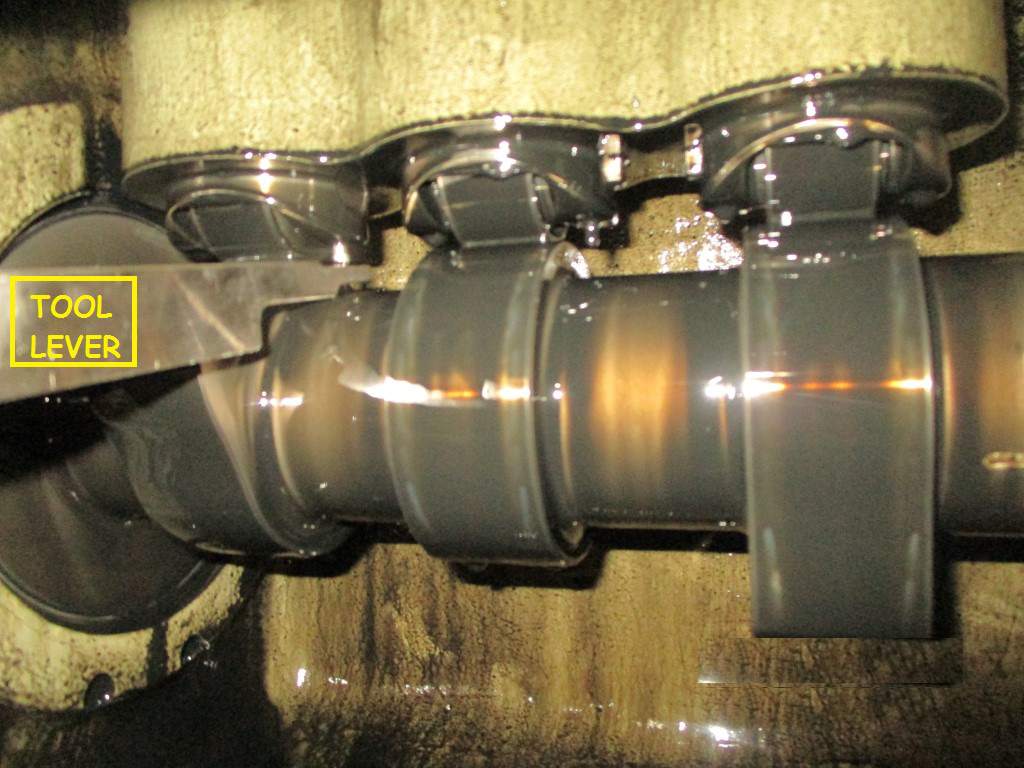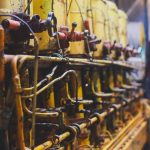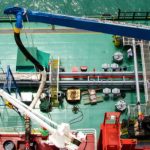Checking Fuel Pump Timing
The primary method of checking fuel pump timing would be using the manufacturer’s instructions of setting the fuel pump with the engine stopped. For the Bosch type fuel pumps, a small window is present at the base of the fuel pump. Within this window an engraved line can be seen on the spring holder of the fuel pump. When the cam follower is displaced by the cam, it pushes the spring holder up. When the engraved line coincides with the line on the fuel pump body, then the fuel pump plunger is at the position where it is just covering the spill ports.
Hence at this moment the fuel pump is starting to pressurize the trapped fuel volume, and hence fuel delivery will commence. Thus the engine is rotated to the point where the two lines coincide, and this indicates the commencement of fuel delivery. The actual crank angle would be read off the flywheel.
Adjusting Fuel Pump Timing
Should the fuel pump timing be required to be changed, then the shims fitted underneath the fuel pump would be changed. If shims are added the fuel pump will inject later, and visa versa for removing the shims. The fuel pump is attached to the fuel rack, and the fuel control lever set to the same readings as the other fuel pumps. This should deliver the same fuel quantity. The fuel pump rack should always read zero when the governor is in the no-fuel position, to ensure the engine will stop when required.
To enable the actual fuel quantity delivered from each fuel pump to be measured, indicator cards would be required. Indicator cards would be taken from each cylinder and the power developed would be found, either directly from the software for the electronic cylinder units, or using a planimeter to determine the area of the power card for the mechanically taken indicator cards.
Checking and Adjusting Variable Injection Timing (VIT) Fuel Pump
A variable injection fuel pump can also be adjusted for fuel timing with the engine running. Thus whilst the engine is running the fuel pump timing can be checked by the draw card type of indicator card. On this type of card the position when the fuel has ignited can be seen by either
· The point at which the pressure-volume curve moves away from the normal compression curve, or
· The point on the pressure derivative curve on the electronic indicator when the rate of pressure rise suddenly increases. The derivative curve makes the point of fuel ignition much easier to determine.
Once the point of fuel timing is determined, then the fuel pump can be adjusted either
§ Collectively for the whole engine by adjusting the sensor which determines the quantity of fuel timing advancement by measuring the position of the fuel rack position. Any adjustment of this sensor will advance or retard the fuel timing of all fuel pumps at once.
§ Individually by adjusting the linkage from the individual fuel timing servo to the fuel pump. This adjustment will adjust the fuel timing of an individual fuel pump.
§ The fuel pumps would need to be adjusted collectively, when the fuel combustion quality reduces. Hence if combustion was slower than normal, possibility due to a high level of Conradson Carbon or Ashalptenes, then the fuel timing could be advanced. This will allow more time for combustion, and should reduce exhaust temperatures and smoke levels. When fuel timing is advanced it is important that the cylinder maximum pressures are measured to ensure that they are not excessive.
§ Should the ignition quality of the fuel be lower than normal, then the initial raise in cylinder pressure when combustion occurs will be higher than normal, and may even lead to bearing damage. In these cases the fuel timing would be retarded to depress the rate of pressure rise.
§ Individual fuel pump timing adjustment would be required when the fuel pump is internally worn. This will cause a lower amount of fuel to be injected, but also later in the engine cycle. Hence the performance of the pump could be regained by increasing the quantity delivered at the fuel rack, and advancing the individual fuel pump timing.


